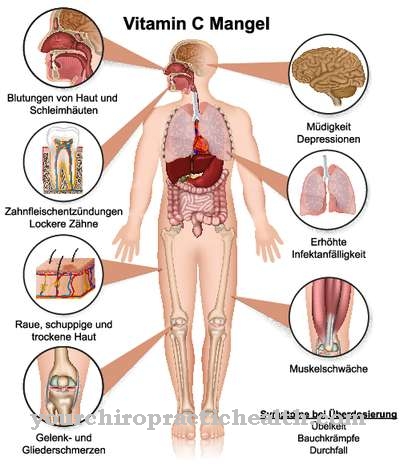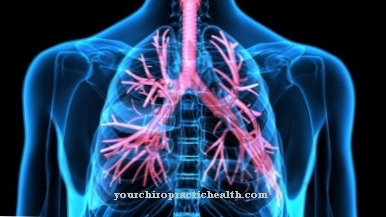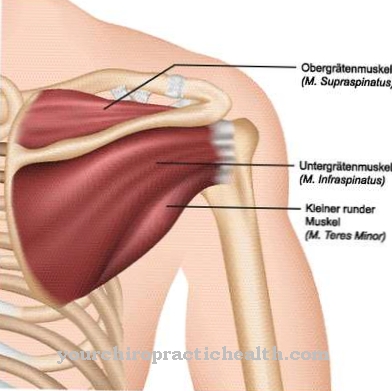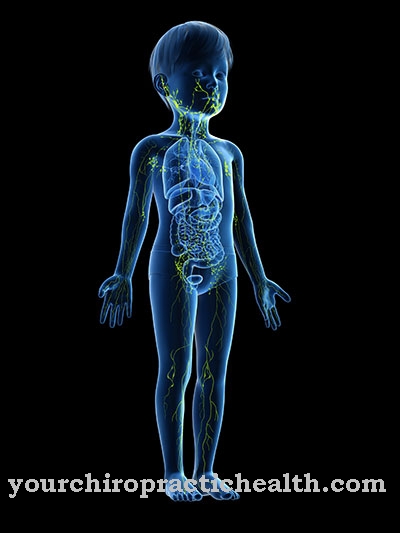Cysts are tissue cavities that are lined with a layer of epithelial cells and can contain accumulations of fluid from tissue, blood or, in the case of inflamed cysts, also pus. In the case of the Jaw cysts these cavities are located in the lower or upper jawbone or in the adjacent soft tissue.
What are jaw cysts?

© vecton - stock.adobe.com
Jaw cysts arise more frequently in the upper than in the lower jaw and usually occur in middle age. There are two types of jaw cysts: odontogenic cystthat arose from dental tissue and that non-odontogenic cystthat develops in the surrounding soft tissue.
The cyst is separated from its surroundings by the cyst wall (capsule or shell made of soft tissue) and has no drainage. The contents of the cyst are mostly produced by the epithelial cells that line the inner cyst wall.
Since the cyst contents cannot drain away, the cyst grows over time and presses on neighboring tissue. Jaw cysts are in the vast majority of cases benign and are only noticed when they cause discomfort as they grow.
causes
The causes are growth disorders or undesirable developments, genetic predispositions and inflammations that lead to the formation of a Jaw cyst can contribute. About 80% of all jaw cysts are odontogenic cysts, which are caused by inflammation at the tip of the root of a diseased or dead tooth.
These inflammations can arise, for example, from a root canal treatment with irritation of the periodontal membrane and are also known as radicular cysts. Follicular cysts, on the other hand, develop in the fetus in the womb when the tooth germ is planted. This type of jaw cyst surrounds the milk tooth before it breaks through.
Some follicular cysts also lie directly on the tooth and bulge up the gums even before the tooth breaks through the gums. Periodontal cysts form on healthy teeth, while gum cysts are often found near canines or the anterior molars. Non-odontogenic cysts arise from the soft tissue that surrounds the jawbone. They are usually located in the roof of the mouth or in the maxillary sinus and can lead to misaligned teeth, among other things.
Symptoms, ailments & signs
Jaw cysts usually do not cause any clear symptoms at the beginning. The first symptoms appear when the cavities have reached a large size. Then they can be felt from the outside, and if they are felt with a finger, a cracking or crackling noise can occur. As it progresses, the cysts cause tissue damage in the neighboring region.
Pressure points, swellings and infections, but also fractures or deformation of the bone are possible. If the cysts press on a nerve or displace the tissue in the jaw area, pain also occurs. The pain is usually described as dull or throbbing. They usually appear in phases and can radiate to the surrounding body regions.
If the jaw cyst continues to grow, misaligned or loosened teeth can occur. Further growth of the cysts eventually leads to the failure of the teeth in the affected area. At the same time, the jawbone is rubbed open.
This process can take months or years and manifests itself in increasing pain and instability of the jawbone. If the cysts are left untreated, the jaw may break. In addition, the cysts can break open and cause inflammation or infection.
Diagnosis & course
There Jaw cysts grow very slowly and do not cause any symptoms for a long time, in many cases they are only discovered by chance during X-ray or ultrasound examinations or dental treatment. If the cysts get larger, they can cause pain and non-specific feelings of pressure in the area of the jawbone due to the displacement of the surrounding tissue.
If the jaw cyst is not treated, it can even "soften" and deform the jawbone. If you press your finger against a jawbone that has been swollen by the cyst, you can hear a kind of crackling sound.
In the further stage, the cyst can deform the jawbone to such an extent that it loses its substance and stability and this can even lead to disfigurement of the face. Nerve damage with associated symptoms of paralysis is also possible.
Complications
In many cases, jaw cysts do not lead to particular complaints or complications. These can spread in the patient's body for several years and do not lead to pain or other complaints. However, the jaw cysts can also cause the jaw to swell, which is usually visible. The cyst can also be diagnosed by gently pressing the jaw.
The cyst can also deform the bone of the jaw, causing severe pain. Disfigurements of the face also occur, which often lead to depression or other psychological complaints. This significantly limits and diminishes the patient's quality of life. This can lead to paralysis of the face, making it difficult for the person to take fluids and food.
The jaw cysts are usually removed by a surgeon or a dentist. There are no particular complications. However, those affected are still dependent on taking antibiotics to prevent inflammation after removal. The jaw cysts do not usually reduce the patient's life expectancy.
When should you go to the doctor?
Since a jaw cyst often remains symptom-free for a long time, the person affected should take part in regular dental check-ups. In many cases, incidental findings reveal the cysts present. A doctor's visit is required as soon as discomfort and irregularities develop in the oral cavity. A doctor is required in the event of pain, tooth displacement or loosening of the teeth. If pain spreads over the face to the head area, a doctor should be consulted. In the case of sleep disorders or interruptions in concentration, we also recommend clarifying the symptoms. If you have problems chewing, swellings or a feeling of tightness in your mouth, you should consult a doctor.
If you notice any irregularities when wearing braces or if there are problems with a built-in denture, you should consult a doctor.Refusal to eat for several days and severe hypersensitivity to food and liquids are indications that should be examined by a doctor. If, in addition to the discomfort of the teeth, there are abnormalities in the gums or the jaw, a check-up visit should be made to a doctor. Discoloration of the mucous membranes and pus formation in the mouth should be presented to a doctor. A doctor should be consulted if the jaw is misaligned, the shape of the face changes or there is sudden bleeding in the mouth.
Treatment & Therapy
Became a Jaw cyst Discovered during an imaging procedure, it is always advised to remove it. On X-ray and ultrasound images, a cyst can often not be differentiated from a seldom occurring tumor, so that only removal by a dentist or oral surgeon and a possible subsequent histological examination can provide information about the type of cyst.
In many cases, radicular cysts can be removed with tooth extraction. For smaller cysts in the jawbone or soft tissue, a cystectomy (removal) is usually performed, while larger and inconveniently located cysts can only be incised (cystostomy) so that the contents of the cyst can drain away.
If the jaw cyst has created a cavity in the jawbone, it is filled with bone substitute material in order to maintain or restore the stability of the jawbone. Both the removal and the incision of the cyst will require subsequent antibiotic treatment to prevent inflammation. Jaw cysts can recur, which means that they can later form in the same place.
You can find your medication here
➔ Medicines against tartar and tooth discolorationOutlook & forecast
Jaw cysts are usually discovered by the attending dentist by chance. In most cases, the doctor will diagnose them based on an X-ray taken from a diseased tooth. Such jaw cysts are generally considered harmless, but should be treated promptly. If the affected person decides to have treatment with a doctor, the existing jaw cyst is removed by means of an operation. The resulting cavity is filled with a special material so that any complications can be excluded at an early stage.
If such an operation is not carried out, the person concerned must expect considerable problems. An existing jaw cyst can enlarge within a very short time so that it is even visible from the outside. In addition, misalignments of the jaw or teeth are possible, which can only be corrected with great difficulty and at great expense. For this reason, such jaw cysts need to be removed.
If the person concerned opts for medical and drug treatment, a quick and at the same time complete recovery can be expected. Without any medical intervention, self-healing is as good as impossible. Jaw cysts will not regress on their own, so a visit to the doctor is essential.
prevention
The best prophylaxis are good dental care and oral hygiene, a healthy diet and regular dental checkups. Even with minor or unclear complaints, one should not shy away from a visit to the dentist to find out any problems that may arise Jaw cyst to recognize in time. If a cyst has been removed or treated, regular follow-up checks are necessary in order to identify a possible recurrence in good time.
Aftercare
Follow-up care primarily affects diseases that can recur after initial therapy. Tumors are one of them. Doctors expect a better prognosis by starting treatment early. Such a procedure may also be appropriate after a jaw cyst has been removed.
Because in certain cases there is a new formation. The rhythm of aftercare is agreed between the doctor and the patient depending on the cause. X-rays, on which the cysts can be clearly identified, are suitable for diagnosis. Follow-up care also aims to prevent pain and complications.
This is best achieved by taking it easy immediately after an operation. Solid foods should be avoided for a short time. The doctor often prescribes special mouthwashes to ensure hygiene. Once the wound on the gum has subsided, the acute aftercare can end. There is only the question of a new formation.
Jaw cysts usually do not require treatment while they are still small. Because there are no symptoms, doctors often do without surgical removal. Instead, they choose long-term therapy or follow-up care in which they observe the development of the cysts. Annual presentations, in which the development status is analyzed by means of an X-ray, are suitable.
You can do that yourself
A jaw cyst usually does not cause any symptoms, but it still has to be treated by a dentist. Otherwise the cavity enlarges and can displace healthy tissue or cause misaligned teeth.
As a self-help, it is recommended that those affected see a dentist or oral surgeon at the first signs of a cyst. Until the doctor's visit, the affected area should not be irritated or touched with the tongue, if possible, in order to avoid injuries or the development of a bacterial focus. After the treatment, the advice and instructions of the doctor must first be followed. Thorough dental and oral care is fundamentally important.
So that the recovery can proceed without problems, the body should be sufficiently spared. This means not eating or drinking immediately after the operation. Gradually, liquid foods such as soups or porridge can be consumed again. Alcohol, coffee and nicotine should be avoided if possible, since the body is already exposed to a great deal of stress. In the days after that, strenuous activities and sports should be avoided. Regular check-ups at the dentist are also advisable. In the event of undesirable complications, the dentist should be visited directly.


.jpg)





















.jpg)



